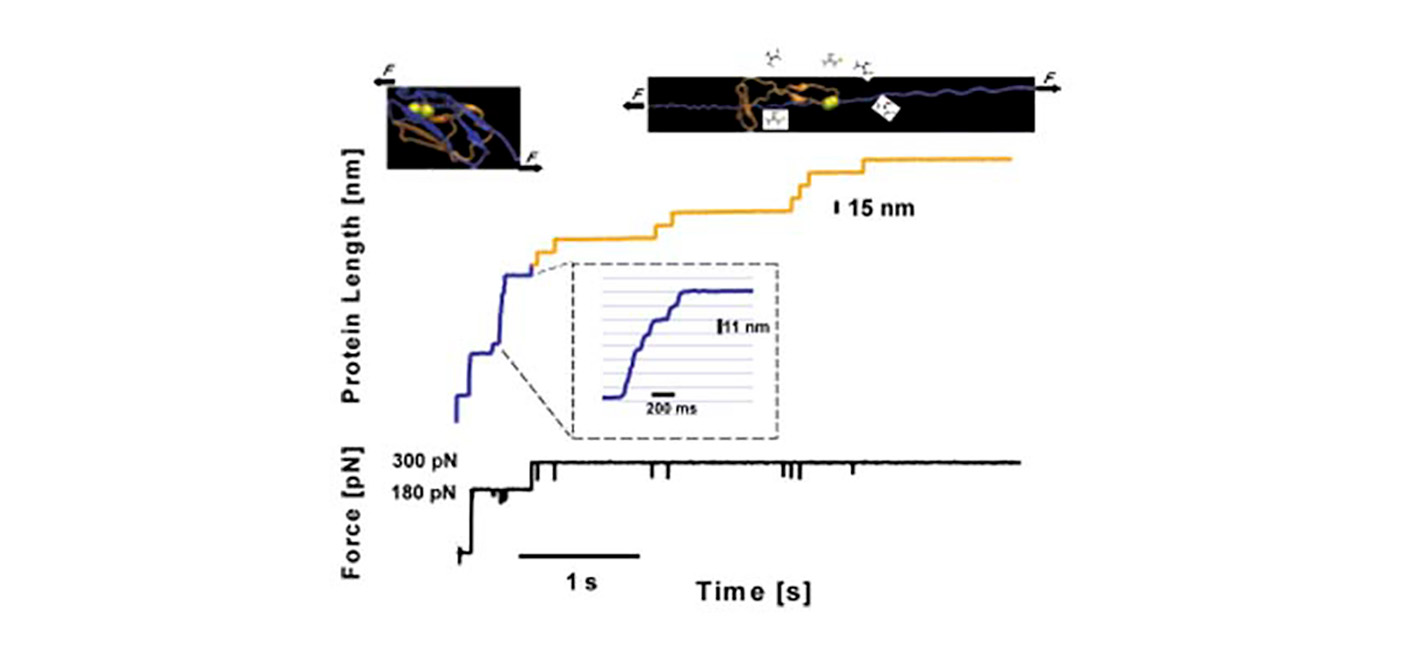
Seminar “The nanomechanics of individual biomolecules”
Date
Wednesday, 26th June 2013
Time
12:00 am
Place
University of Barcelona
Faculty of Physics Building
Room 3.20, 3rd floor
Speaker
Dr Sergi Garcia-Manyes, King’s College London (UK)
Abstract
Understanding the molecular mechanisms that confer mechanical stability to well-defined biological systems is a major challenge in modern physics, chemistry and biology. However, the molecular mechanisms by which mechanical force distributes across different length-scales, spanning the cellular level down to the single bond, are largely unknown.
Using single molecule force-clamp spectroscopy AFM, we unveil the effect of a mechanical force on the free-energy landscape governing three distinct biologically relevant force-activated processes; the rupture of cell membranes, the (un)folding pathways of individual proteins and the effect of a mechanical force on the outcome of a chemical reaction, occurring at the single bond level. We first study how a constant pushing force affects the rupture kinetics of a stack of lipid bilayers, and find that the overall mechanical stability of the lipid bilayer results from a complex and fine mechanochemical balance, where the chemical composition of both the headgroup and tail has a crucial effect.
Furthermore, force clamp spectroscopy allows us to monitor for the first time, with exquisite sub-Angstrom sensitivity, the conformational dynamics of a single refolding protein during its individual folding trajectory from highly extended states. Contrary to previous belief, our experiments demonstrate that the acquisition of the protein’s native conformation occurs after dynamic maturation of an ensemble of collapsed states that are mechanically labile and structurally heterogeneous. These results support the validity of statistical mechanics models in describing the folding of a small protein on biological timescales. Finally, using a combination of protein engineering techniques with single molecule force-clamp spectroscopy we examined the influence of force on the rate at which a protein disulfide bond is reduced by nucleophiles in a bimolecular substitution reaction (SN2).
Our experiments directly identify a reactivity switch occurring at ~500 pN, resulting from a force-induced conformational change in the ground state of the disulfide bond. The single protein data is providing a new view that will help guide the development of theories on the statistical dynamics of folding and ab-initio studies of a chemical reaction while placed under a stretching force; of common occurrence in nature.


